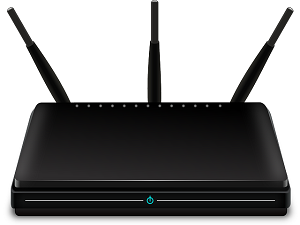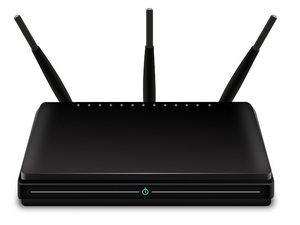
People will continue to work from home and attend classes from home in great numbers. That means more connected devices in more places in your home. It also means more people are sharing the internet connection.
Also, it may mean you need a wired or wireless network in parts of your home that you previously didn’t. We’ll show you a few ways to connect two routers to make your home network more robust.
Why Would I Set Up a Second Router?
There are several ways to add a second wireless router to your home network. You could use it as an access point or repeater to extend wireless coverage. You could set up a separate network for guests to use. Or you could use the second router as a switch to add more Ethernet ports to your network.
Requirements for Setting Up a Second Router at Home
Not every Wi-Fi router can be set up as a second router for extending wireless range or as an access point (AP). Here’s what you need:
- Administrator access to your primary and secondary router.
- To set up as an AP or switch, an Ethernet cable to connect the two routers.
If your second router isn’t capable of being used in these different modes because it’s older, look for a firmware update. The update may expand its capabilities.
For this tutorial, we’re using an Asus RT-N300 as our second Wi-Fi router. Your routers are likely different. However, the same concepts apply whether it’s a D-Link, tp-Link, Linksys, Netgear, or any of the many good router models available.
How to Setup a Second Wi-Fi Router as a Wireless Access Point
If your home is wired for Ethernet and you want excellent wireless coverage and internet access everywhere in your home network, consider using the second router as an access point (AP). You’ll get great Wi-Fi coverage with a fast, stable Ethernet connection between your secondary router to your primary router.
- On the second router, log in and go to Administration > Operation Mode and select Access Point Mode, then Save.
- At this point, let the router set the LAN IP and connect to the Domain Name Server (DNS) automatically. Then select Next to continue.
- In Wireless Setting, leave the default of Yes selected for Do you want to use the previous wireless security settings? This lets you connect to the AP with the same SSID and password as the main router, making for a seamless transition between the two when moving around.
If you want to make a guest network with a different SSID and password, select No and then change the values as needed. The guest network wouldn’t be completely separate from your personal network; it would just mean you don’t have to share your personal password. Select Apply to continue.
The router applies the settings.
- Connect the WAN port of router 2 to a LAN port on router 1, either directly or through the wired home network. Now you have an AP.
7-ap-no-wall-jacks.png
How to Setup a Second Wi-Fi Router to Extend the Range
Often the wireless router is set up on one end of the house, where services come into the home. Then the far end of the home has poor or no Wi-Fi signal. Setting up a second Wi-Fi router as a Wi-Fi range extender somewhere near the middle of your house will give you wireless connection anywhere in your home, without a wired Ethernet connection to the first router.
Fortunately, many new routers have a wizard process to set it up as a wireless range extender. For example, the Asus RT-N300 provides a simple repeater mode option on initial setup. To estimate where to place the second wireless router, use an app to measure the wireless signal strength and find where it starts to drop. Go back a few feet into better signal strength and that’s a good spot to put it.
- Select Repeater mode, then Next.
Note the link to a Device Discovery Utility. That link is dead, however we found a new link to the Device Discovery Utility. There is also an ASUS Device Discovery app for iOS for iPhones and iPads. The Device Discovery Utility makes it simpler and easier to find the router’s IP address after it’s set up as a wireless repeater.
- The wizard scans nearby wireless signals and shows their networks. Select yours from the list. Enter the password used to connect to your Wi-Fi network, then select Connect.
- The wizard sets a static IP address and collects the local network’s subnet mask and default gateway. These settings are fine, leave them as they are and select Next.
- The Wireless Setting defaults are fine for most people as well. Leave them as they are and select Apply. This makes it so that your wireless password will connect you to your home network through either router.
The router now connects to the main Wi-Fi router. When this is complete, it doesn’t return to the router management page, because the second router’s IP address has changed. This is where you need the Device Discovery Utility.
- Open the Device Discovery Utility downloaded in Step 1 to get the new IP address of your second router. Enter that IP address into your web browser to get to the router management site and log in.
- Go to Advanced Settings > Wireless and switch Roaming assistant from Disable to Enable. The default RSSI setting of -70 dBm is good for most situations. That means that when the second router sees a device with a signal strength less than -70 dBm it will disconnect from it. The device can now try to connect to your primary router, giving a seamless transition between the two. It’s similar to how your cellphone call gets passed from tower to tower as you’re driving. Select Apply.
It can take a few minutes to finish. You now have wireless coverage around your second router.
How to Setup a Second Router to Act as a Switch
Most home networks have a combination modem/router with 4 or 5 Ethernet ports on the back for wired connections. Once those ports are full, and you still want wired connections, what do you do? Use your router as a switch. You can also use an Ethernet router for this.
- Connect router 1 to router 2 with an Ethernet cable. One end is plugged into a LAN port or the first router and the other to a LAN port on the router. Ignore the WAN port. Use another Ethernet cable to connect the second router to your computer.
- Log in to the first router and take note of the IP range it covers. In this example, the subnet is 192.168.2.0/24 and the range of IP addresses that can be given is from 192.168.2.10 to 192.168.2.254. IP addresses ending in 1 to 9 aren’t available to the DHCP server so they can be given as static IP addresses and not cause an IP conflict in the network.
- Connect to the second router’s management page and navigate to Advanced Settings > LAN > LAN IP To make it easier to find and connect to the router again, give the router a static IP that’s different from your first router, but in the same subnet. We’re using 192.168.2.2. Make sure the subnet mask matches the first router’s subnet mask. Select Apply. You’ll need to enter 192.168.2.2 in the browser’s location bar to reconnect.
- Move to the DHCP Server tab and disable DHCP. Only router 1 should act as a DHCP server and assign IP addresses.
- If possible, turn off wireless access. Go to Wireless > Professional and set Enable Radio to No. If your router doesn’t have that option, secure the wireless access as much as possible by hiding the Service Set Identifier (SSID) also known as the name of your Wi-Fi, and setting ridiculously strong access passwords. This prevents anyone from connecting to it as a wireless device, accidentally or on purpose. Now you can connect more devices via Ethernet to your home network by plugging them into the remaining LAN ports.
If this tip helps and you would like to donate click on the button. Thanks In Advance
________________________________________________________________________________________________________
"Fortune Favors, Who Value Time over Money!"
"TeQ I.Q. was the 1st IT Company to Deliver Cloud Solutions since 2003"
Tech issues taking up your Time?
"TeQ I.Q. Makes Your Technology Simple and Easy"
Do you have Tech Frustrations like your Computer, Internet, Phone, Cellphone, Camera, TV, Car?
"Buy a TV from TeQ I.Q. with Ease and We Install it for Free!"
"We Take Away Your Tech Frustrations and Give You the Free Time You Deserve!"
Call Robert to ask all your Technology questions.
We are giving a Free in Person TeQ Seminar at our office in La Mesa every Wednesday from 12pm-1pm and a Free TeQ Support Q&A from 1pm-2pm. Go to https://www.teqiq.com/events for our upcoming Events and https://www.teqiq.com/seminars for info on each Seminar.
For Free Consultation Call Now Robert Black at (619) 255-4180 or visit our website https://www.teqiq.com/
Chase Bank and Others Trust TeQ I.Q. with their IT and TeQnology so can you!




